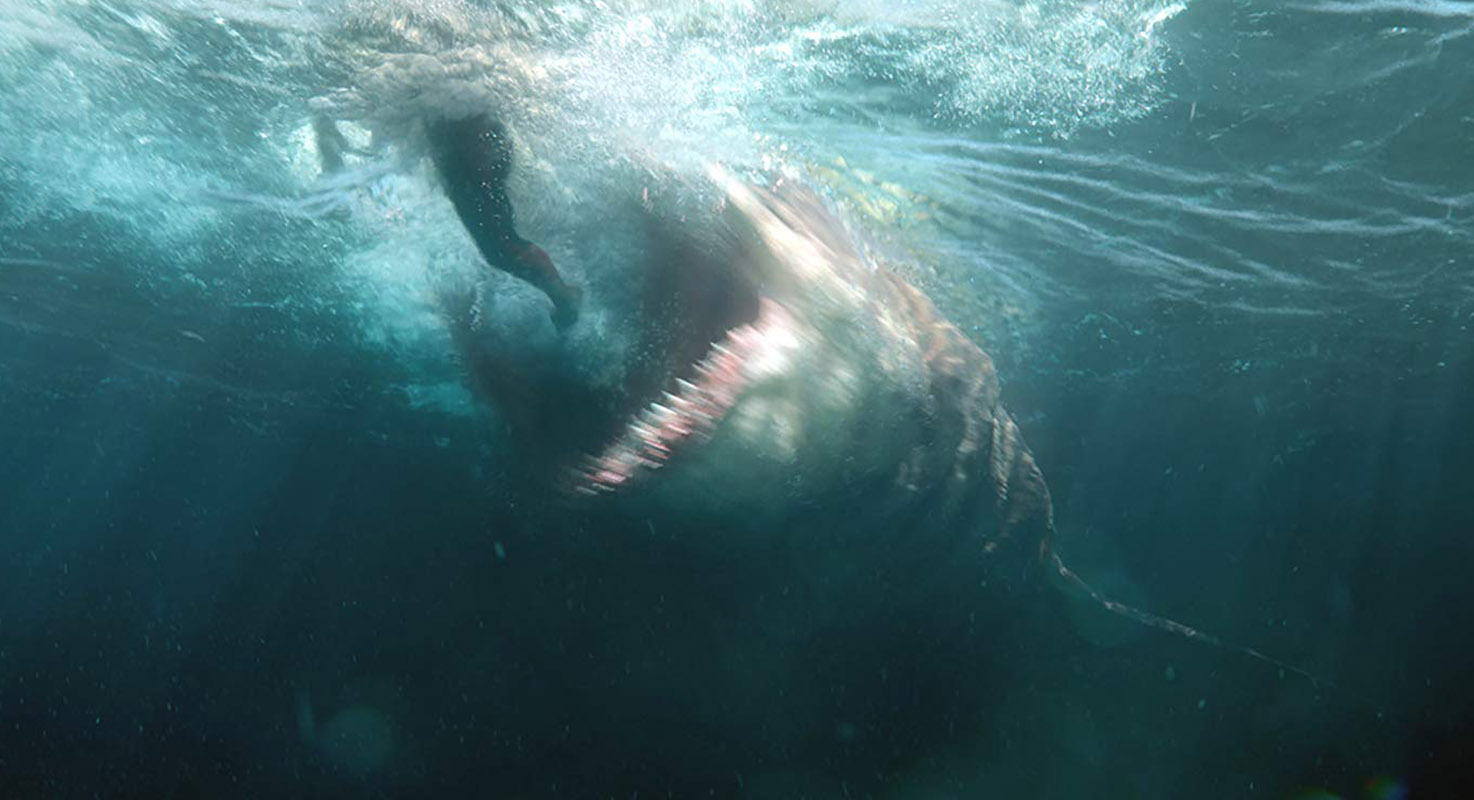
More Teeth: The Appeal of “The Meg” and Other Monster Movies
Written by: Valerie Kalfrin, CC2K Staff Writer
With taglines like “Chomp on this” and “Pleased to eat you,” the action-thriller shark tale The Meg chowed down on its box office competition this weekend, earning $44.5 million nationwide since its Aug. 10 opening—and about $147 million worldwide.
That’s a hit for Warner Bros., which leaned into marketing the movie’s humor instead of its horror. Still, that got us thinking: In a season where we’ve already watched people flee from dinosaurs (Jurassic World: Fallen Kingdom), what’s the appeal of giant creatures that want to eat us?
Or at least battle one another while we try to scramble, antlike, out of the way, as in next year’s Godzilla: King of the Monsters?
A campy adaptation of Steve Alten’s bestselling 2011 novel MEG: A Novel of Deep Terror, the film The Meg pits a prehistoric shark called a megalodon—a real creature that grew to about 60 feet long roughly 15 million years ago—against the surly determination of Jason Statham as a navy diver and paleontologist.
It sounds ridiculous yet entertaining, the sweet spot for some viewers. CC2K said it’s “a wet and wild ride not to be missed.” Entertainment Weekly called it “cheesy popcorn fun,” adding that “Statham, God bless him, knows exactly what kind of guilty pleasure he’s signed on for.”
But monster movies—especially those featuring giant teeth—reach us on a psychological level beyond basic storytelling, according to academics and others who dive deep into these stories.
The original Godzilla (1954) and other kaiju tales are interpreted as nuclear-age parables and anti-war allegories. But kaiju also represent “the wrath of nature, human hubris, and dark immutable forces,” according to a BBC story on Godzilla’s evergreen appeal.
Many of these monsters originate from “historical natural disasters, such as volcanic eruptions, typhoons or earthquakes,” notes the book Giant Creatures in Our World: Essays on Kaiju and American Popular Culture. That’s one reason Godzilla “is considered a force of nature by the Japanese and not an oversize radioactive lizard,” says Norman England, director of the 2008 genre documentary Bringing Godzilla Down to Size: The Art of Japanese Special Effects.
Sharks have been a force of nature at the summer box office since 1975’s Jaws. To name a few in that Great White’s wake, we’ve seen Deep Blue Sea (1999), Open Water (2003), The Shallows (2016), 47 Meters Down (2017), and Syfy’s Sharknado franchise—not to mention “Shark Week” on Discovery, which turned thirty this year.
“We did the research and could not find a killer shark movie that didn’t work,” Byron Allen of Entertainment Studios has said of 47 Meters Down. A sequel, 47 Meters Down: The Next Chapter, is slated for next summer.
Sharks are inherently scary. Great whites sense their prey through tiny electromagnetic fields that other animals emit in water, plus they have several rows of up to 300 teeth, National Geographic says.
But our fear of them is out of proportion to the facts: There were 88 unprovoked shark attacks on humans worldwide in 2017, according to the International Shark Attack File.
David Ropeik, a consultant in risk perception and author of How Risky Is It, Really? Why Our Fears Don’t Always Match the Facts, has said humans generally worry more about risks involving high degrees of pain and suffering, as well as those involving uncertainty (like not being able to see underwater).
Our fear of sharks stems from that basic foundation, as well as how the brain processes information, Ropeik told Live Science. We’re hardwired to respond first with feelings, then thoughts—so “when a person ‘thinks’ about sharks, he or she isn’t really thinking objectively.”
Add in the cognitive and emotional effects that research shows we experience when watching scary films—accelerated heart rate, blood pressure, and respiration—or the visual effects that enamor some viewers, and you have potent bait.
